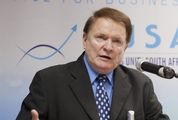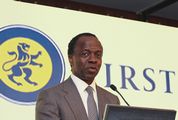A STORY first told by Mark Dowie in 2006 is doing the rounds again. It is not surprising as it is one worth retelling. Originally published by San Francisco magazine under the title "The best investment advice you’ll never get", it is the tale of an idea that is slowly but surely gaining traction, has won many converts the world over and is generally disliked by money managers everywhere.
It is about the origins and benefits of indexing.
As Dowie explains: "It all started in the early 1970s with a group of maverick investment professionals working at Wells Fargo bank. Using the vast new powers of quantitative analysis afforded by computer science, they gradually came to the conclusion that the traditional practices guiding institutional investing were, for the most part, not delivering on the promise of better-than-average returns.
"As a result, the fees that average (investors) were paying brokers to engage in these practices were akin to highway robbery. The insurrection these mavericks created eventually caught on and has spread beyond the Bay area.
"Under threat are the billions of dollars that mutual funds and brokers skim every year from often unwary investors."
Contrary to the widely held belief that "Bogle’s folly" — the Vanguard 500 — was the first index fund, according to Dowie the first fund was in fact created by John McQuown and Bill Fouse in 1971 with a $6m contribution from the Samsonite Luggage pension fund, referred to them by Bill Sharpe.
"It was Sharpe’s academic work in the 1960s that formed the theoretical underpinning of indexing and would later earn him the Nobel Prize," Dowie says. "The small initial fund performed well, and institutional managers and their trustees took note."
John Bogle does feature big, however, in Dowie’s telling of how Jonathan Rosenberg tried to protect "the hundreds of impetuous young multimillionaires" about to be spawned by Google’s initial public offering. "One by one, some of the most revered names in investment theory were brought in to school a class of brilliant engineers, programmers and cybergeeks on the fine art of personal investing."
First to arrive was Stanford University’s William (Bill) Sharpe, the 1990 Nobel laureate economist and professor emeritus of finance at the graduate school of business. "Don’t try to beat the market," he said. "Put your savings into some indexed mutual funds, which will make you just as much money (if not more) at much less cost by following the market’s natural ebb and flow, and get on with building Google."
The following week it was Burton Malkiel, formerly dean of the Yale School of Management and author of the classic A Random Walk Down Wall Street (in which he suggests that a "blindfolded monkey" will, in the long run, have as much luck picking a winning portfolio as a professional money manager). Malkiel’s advice to the Google folks was in lockstep with Sharpe’s. "Don’t try to beat the market," he said, "and don’t believe anyone who tells you they can".
Next was "Saint Jack" (John Bogle), whose closing advice was as direct as that of his predecessors: "Brokers and financial advisers are there for one reason and one reason only — to take your money through exorbitant fees and transaction costs, many of which will be hidden from your view. Ignore them and invest in an index fund."
"Any passively managed index fund will do," said Bogle, "because they’re all basically the same".
Of course, he wasn’t talking about the likes of the AltX, which fell from a high of 5,090 in 2007 to a low of 808 last year, and despite recovering 44% in the past 12 months still sits at 1,160.
Bogle’s Vanguard Total Stock Market Index Fund represents about 99.5% of US common stocks.
But you do not have to go that far to find evidence to support the view that one index performs much like another — at least in the long run. An investment in the Alsi five years ago would have provided a return of 145% by the end of last week, not that different to the gains of 146%, 137% and 138% achieved by the top 40, mid-sized and small-cap indices respectively. Volatility would not have differed much either; from its precrisis high to post-crisis low the Alsi fell 46% whereas the mid-sized index dropped 48%, small caps 42%, and the top 40 suffered a loss of 50%.
That is not to say they are always in step. The top 40 fell after but then quicker than the others in the crisis. On the other hand, the mid-sized index has outperformed the Alsi over the past 10 years (growing 367% versus 336%); in the past 12 months it has gained only 7% against the Alsi’s 19%, (top 40 22% and small caps 20%).





















Register/Login
Close XMy News
You can only set up or view personalised news headlines when you are logged in as a registered user. Thereafter you can choose the sectors of industry in which you are interested, and the latest articles from those sectors will display in this area of your console.
Login or Register.Top Stories
My Watchlist
You can only set up or view your share watchlist when you are logged in as a registered user. Thereafter you can select a list of companies and enter your share details to monitor their performance.
Login or Register.My Clippings
You can only clip articles when you are logged in as a registered user. Thereafter you can click on the "Read later" icon at the top of an article to save it to this area of your console, where you can return to read it at any time.
Login or Register.Change: -1.21%
Change: -1.31%
Change: -1.11%
Change: -1.12%
Change: -2.16%
Data supplied by Profile Data
Change: 0.00%
Change: 0.00%
Change: -1.21%
Change: 0.00%
Change: 0.00%
Data supplied by Profile Data
Change: -0.38%
Change: -0.29%
Change: -0.33%
Change: -0.45%
Change: -0.19%
Data supplied by Profile Data
Change: 0.00%
Change: 0.00%
Change: 0.00%
Change: 0.00%
Change: 0.00%
Data supplied by Profile Data